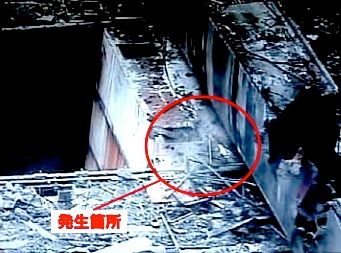 |
| Steam detected emanating from the refueling floor of Fukushima Dai-ichi Nuclear Power Station Unit 3 in July 2013 (source: TEPCO). |
As I discussed in my essay with the title "Fukushima: Fuel Meltdowns & Cold Shutdowns" posted Feb. 15, 2012, TEPCO assumed having reached temperatures below the boiling point of water, that is 100 °C, 17 months ago, using an improvised open-loop cooling water cycle (see IAEA news by Peter Kaiser with the title "Cold Shutdown Conditions Declared at Fukushima" dated Dec. 18, 2011). Reaching reactor pressure vessel temperatures below the boiling point of water with closed cooling water cycles after the shutdown of an intact nuclear reactor is known as cold shutdown, a mode TEPCO proclaimed to have achieved at the time.
TEPCO speculates the steam detected this week is generated by rainwater seeping into the reactor (see TEPCO's press release in Japanese dated Jul. 18, 2013).
Regardless of the source, steam emanating from the primary containment vessel implies that temperatures inside the vessel must be 100 °C or higher. The discovery of new steam proves the company's assertion of cold shutdown incorrect. TEPCO is preparing countermeasures for the possibility of a nuclear chain reaction. Follow the latest developments on simplyinfo.org.
Related Posts







